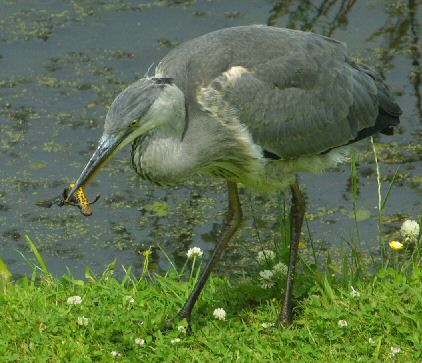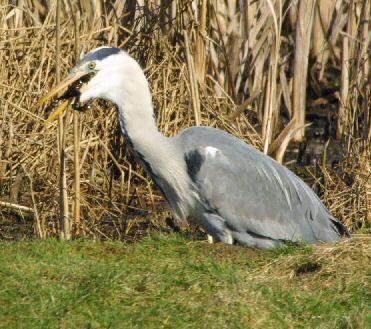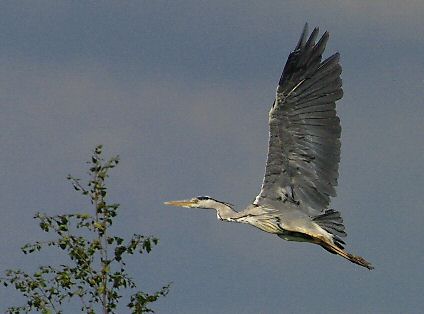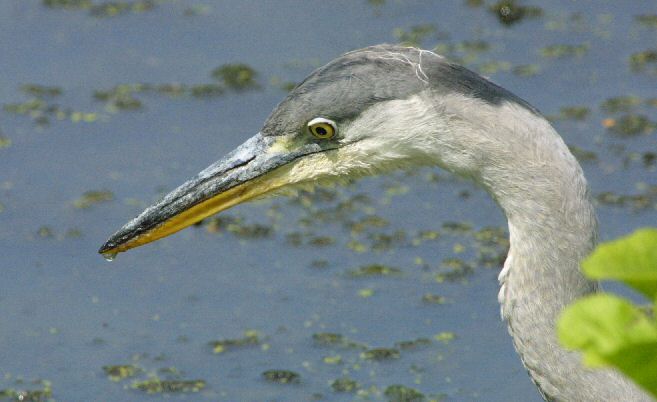 There are no introduced
fish in the ponds so we didn't really expect to see
Grey Herons on
more than a flyover basis.
There are no introduced
fish in the ponds so we didn't really expect to see
Grey Herons on
more than a flyover basis. Herons
 There are no introduced
fish in the ponds so we didn't really expect to see
Grey Herons on
more than a flyover basis.
There are no introduced
fish in the ponds so we didn't really expect to see
Grey Herons on
more than a flyover basis.
But we do have frogs and newts and at various times of year these prove to be a great attraction so we periodically see one or more for several hours a day at certain times of year.
On the right is a typical view of a Grey Heron standing by water. This one was across the pond outside the kitchen window. Very nervous birds, they fly off at the first sight of a human. The yellow beak indicates that it is an adult - the intensity varies according to breeding condition.
Below shows the first we knew we had Great Crested Newts. This immature Heron is learning how to eat one. It took it 20 minutes to work out how to kill and eat this one. While we had the chance to capture the images, we really wished the newt had had a quicker end. A few days later the same bird was despatching similar prey with great speed.

 Frogs are more
regular fare for our herons, especially in Spring after
the frogs have spawned.. The first we knew we had frogs
was when
we saw a heron eating one. We often have trouble seeing
any during
the day while herons turn up and consume several a
day.
Frogs are more
regular fare for our herons, especially in Spring after
the frogs have spawned.. The first we knew we had frogs
was when
we saw a heron eating one. We often have trouble seeing
any during
the day while herons turn up and consume several a
day.
 Herons are big birds about 1
metre long and a wingspan
approaching 2 metres, making them impressive in flight.
Herons are big birds about 1
metre long and a wingspan
approaching 2 metres, making them impressive in flight.
Below is another immature Heron frozen in position waiting for something to make an unfortunate move into open water. We have seen them remain motionless for 15 minutes before making a kill or moving on. At other times they stalk along the pond edges moving in super slow motion (no movie yet!).
